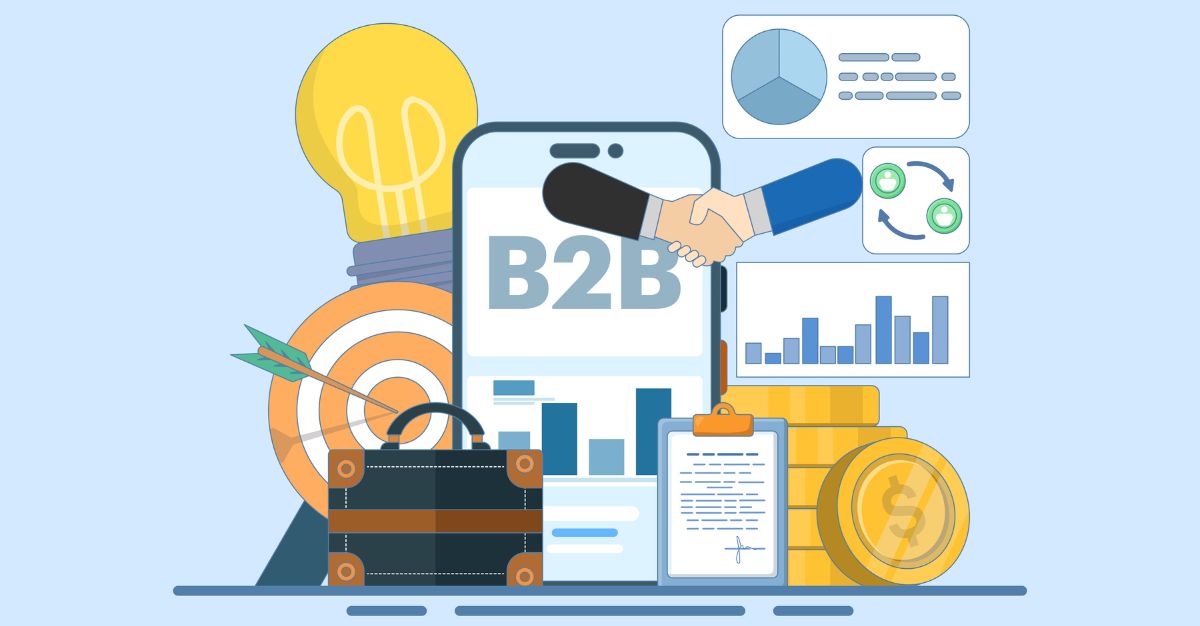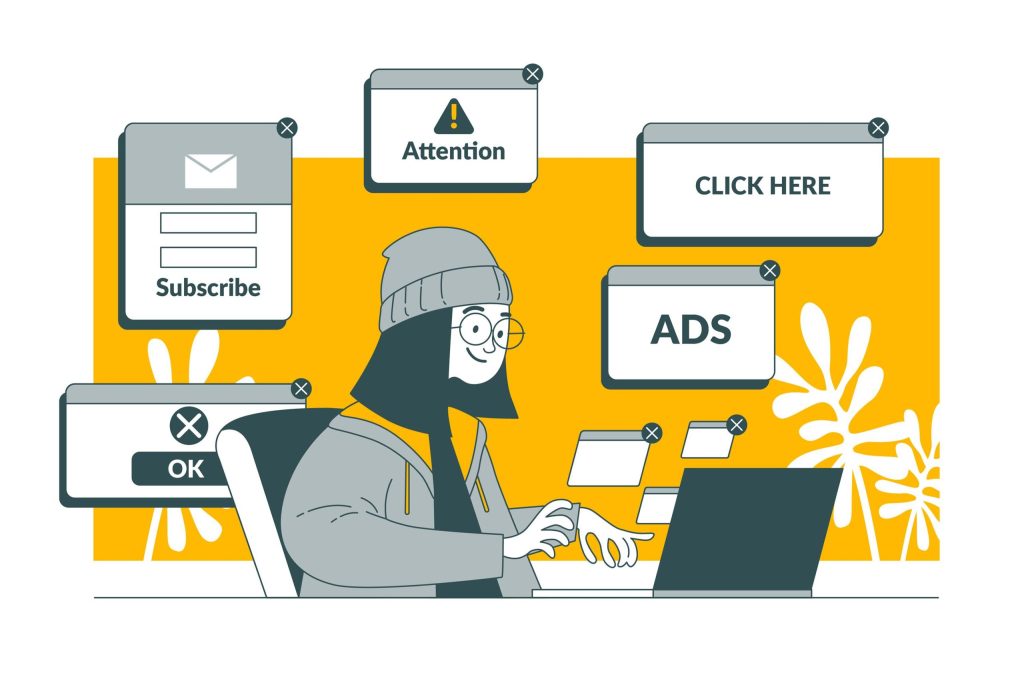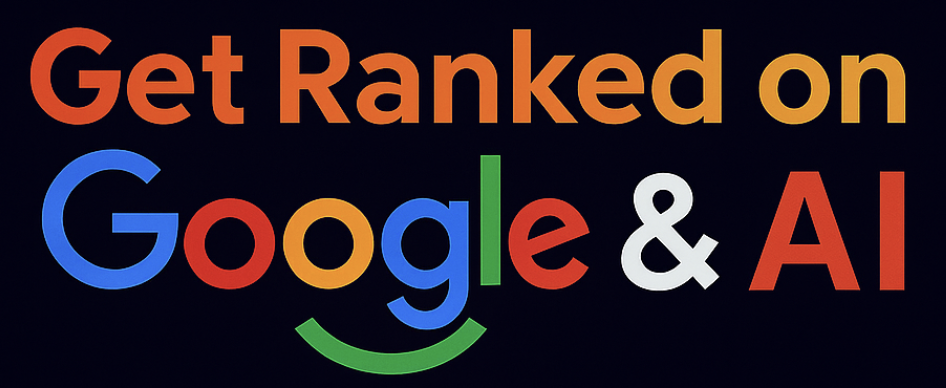You’ve probably heard the pitch: let Google’s algorithms handle your bids, sit back, and watch the leads roll in. Smart Bidding for B2B sounds like the perfect solution for overstretched marketing teams.
But here’s the catch, B2B sales cycles don’t behave like online retail.
When your average deal takes three months to close and involves five decision-makers, can automation truly understand what you need?
Google keeps pushing automation harder each year, yet B2B marketers are asking tougher questions.
Let’s cut through the hype and figure out what smart bidding actually delivers for B2B campaigns in 2025.
Table of Contents
Goodbye ECPC: Your Guide to the New, Smarter Bidding in 2025 Google Ads
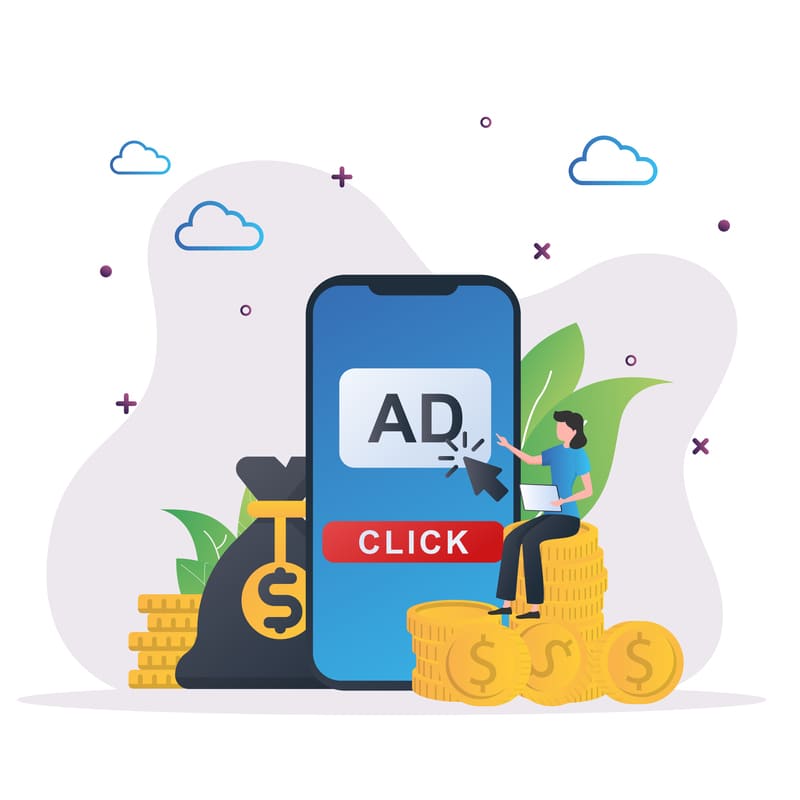
Smart bidding uses machine learning algorithms to adjust your bids automatically during each auction. Google analyses millions of signals,such as device type, location, time of day, browsing history in order to predict which clicks might convert.
The main bid strategies available include:
- Target CPA (cost per acquisition): Sets bids to get conversions at your target cost
- Target ROAS (return on ad spend): Optimises for conversion value
- Maximise Conversions: Gets you the most conversions within your daily budget
- Maximise Conversion Value: Focuses on total value rather than volume
These automated bidding strategies work brilliantly for e-commerce sites selling trainers or subscription boxes. Fast transactions, clear conversion data, thousands of monthly sales. The algorithm has plenty to learn from.
B2B? That’s a different beast entirely.
Why Smart Bidding for B2B Makes Google’s AI Sweat
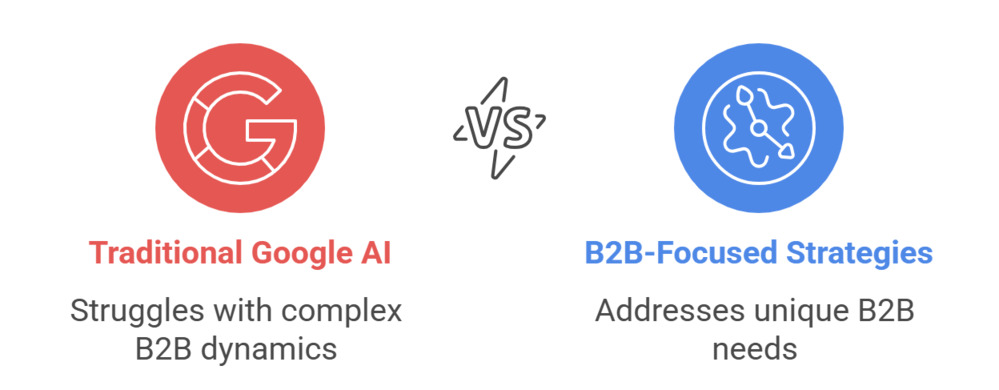
B2B sales don’t fit the mold that Google’s automation expects. Here’s what makes the difference:
a. Complex buying committees
The person who clicks your ad rarely makes the final decision. Your conversion tracking might capture a whitepaper download, but that’s miles away from a signed contract.
b. Lower conversion volume
It starves the algorithm of data. Google recommends at least 30 conversions per month for target CPA and 50 for target ROAS.
Many B2B campaigns struggle to hit those numbers, especially in niche sectors like industrial equipment or enterprise software.
c. High-value leads carry enormous weight
One dodgy lead in B2C might cost you £50. In B2B, chasing unqualified prospects can waste thousands in sales resources. The algorithm doesn’t see that cost.
HubSpot research shows B2B buyers interact with your brand an average of eight times before purchasing. That’s eight touchpoints your conversion tracking needs to capture properly—and most businesses only track the final form fill.
Where Smart Bidding Actually Helps B2B Marketers
Fair play; automation does bring genuine benefits when used correctly.
a. Auction-time bidding
It means Google adjusts your bids in milliseconds based on real-time signals you’d never catch manually. Someone searching from a recognised enterprise IP address at 2 PM on a Tuesday? The algorithm spots patterns you can’t.
b. Reduced workload
It matters hugely for lean teams. Manual bidding demands constant attention to search terms, bid adjustments, and performance metrics. Smart Bidding handles the tedious bits whilst you focus on strategy.
c. Remarketing lists
Along retargeting campaigns work beautifully with automation. People who’ve already engaged with your brand provide stronger conversion data, giving the algorithm better signals to work with.
Mid-market SaaS companies often see strong results. Take a project management platform targeting SMEs.
Their sales cycle might run 2-4 weeks, they generate 100+ monthly conversions, and their target CPA stays consistent. Perfect conditions for Google Ads Malaysia automation to thrive.
Looking to set up automated bidding without losing control? Our Google Ads services help B2B firms design campaigns that actually convert
The Dark Side: Where Smart Bidding Falls Short
But here’s what Google won’t tell you in their case studies.
1. The Data Dependency “Chicken-and-Egg” Problem
The algorithm needs conversion data to learn, but you can’t generate effective conversions without effective bidding.
This creates a challenging learning phase (typically 1–2 weeks) where performance often drops, forcing you to endure a period of wasted spend while the AI figures things out.
2. Serious Goal Misalignment with Business Value
Google’s AI optimises for the specific conversion goals you set, not your true business profitability. If you track all form fills as conversions, the algorithm will efficiently find people who love filling forms regardless of whether they’ll ever qualify or buy from you.
3. Zero Transparency Makes Troubleshooting a Nightmare (The Black Box)
Smart Bidding operates as a black box. In contrast to manual bidding, which shows you the exact CPC, the AI makes decisions without revealing its logic.
When performance tanks, you’re left to guess what went wrong, making efficient troubleshooting and reporting nearly impossible.
A manufacturing company selling CNC machines might generate five quality leads monthly. Each machine costs £250,000, so every lead matters enormously.
Smart Bidding sees “low conversion volume” and struggles to optimise. The campaign performance suffers whilst Google’s algorithm flails around trying to find patterns in insufficient data.
Beyond the Defaults: Advanced Smart Bidding Strategies for B2B Success
You can make automation work, but it requires proper setup and realistic expectations.
a. Layer in audience signals to guide the algorithm.
Upload customer lists, website visitors, and CRM contacts. This first-party data helps Google understand what quality looks like in your world.
b. Fix your conversion tracking to match pipeline stages.
Don’t just track form submissions. Import offline conversions when leads become marketing qualified (MQL) or sales qualified (SQL). This teaches the algorithm which clicks actually matter.
c. Integrate your CRM properly.
Tools like Salesforce and HubSpot can push conversion data back to Google Ads, showing which leads closed deals.
The algorithm learns to bid higher for prospects who look like your customers, not just people who download PDFs.
d. Blend strategies.
Use Smart Bidding for remarketing and broad awareness campaigns, whilst keeping manual bidding for your highest-value keywords and search campaigns.
This mixed approach, combined with advanced targeting Google Ads strategies, lets you control what matters most.
Testing matters hugely. Run A/B testing with manual versus automated campaigns on similar audience segments.
Track not just conversion rate and click-through rate, but actual pipeline value and sales velocity.
Proper tracking and optimisation are core to effective bidding. Our SEO services in Malaysia ensure your campaigns align with actual business outcomes.
Hidden Costs: Privacy and Compliance Headaches
Cookie deprecation, Consent Mode v2, and stricter privacy laws mean Google receives less signal data than before. When visitors reject cookies, the algorithm loses crucial contextual signals about their behaviour and intent.
GDPR in Europe, PDPA in Malaysia, and various regulations worldwide limit how much conversion data you can share back to Google. If your CRM can’t legally push pipeline data to Google Ads campaigns, Smart Bidding operates half-blind.
Data clean rooms and privacy-first advertising create friction. The very first-party data that makes smart bidding work becomes harder to collect and share.
B2B companies dealing with enterprise clients face extra scrutiny especially those massive corporations often ban tracking pixels entirely.
This compliance gap hits B2B harder than B2C. Consumer brands can still track millions of anonymous purchases. B2B marketers lose visibility into their already-limited conversion volume, making automated optimisation even trickier.
Not every lead comes from ads. Our content marketing services give you compliant, long-term visibility beyond paid campaigns.
Budget Bias: Why Big Spenders Win
Smart Bidding heavily favours advertisers with deeper pockets. The algorithm learns faster and performs better when you’ve got data flowing through the system.
Consider two B2B companies in Kuala Lumpur:
| Factor | Company A (SaaS Firm) | Company B (Industrial Supplier) |
| Daily Budget | RM 5,000 | RM 500 |
| Monthly Conversions | 200 | 15 |
| Quality Score | 8/10 | 6/10 |
| Data Availability | Abundant data for machine learning | Limited data, insufficient for fast optimisation |
| Learning Phase | Exits quickly, adapts in days | Takes weeks, struggles to stabilise |
| Campaign Stability | Consistent results aligned with goals | Inconsistent, unpredictable performance |
| Smart Bidding Outcome | Optimises efficiently and scales reliably | Struggles with accuracy, risks wasted ad spend |
Google’s system wasn’t designed to discriminate, but the mathematics favour volume.
More budget means more auctions, more conversion data, better algorithm training. Smaller B2B firms get sidelined by this structural bias in bid management.
Fighting back requires smarter tactics:
- Focus on exact match keywords and tighter audience targeting to make every click count
- Use enhanced CPC instead of full automation. This keeps you in control whilst adding algorithm assistance
- Consider sharing campaigns across multiple markets to increase overall conversion volume
- Lean on display campaigns and video campaigns for cheaper upper-funnel awareness, reserving Smart Bidding for bottom-funnel conversions
Budget pacing becomes crucial. Spreading a small daily budget across multiple automated campaigns dilutes your data.
Better to concentrate on fewer, well-optimised campaigns where the algorithm can actually learn.
Working with specialists who understand Google Ads automation tools helps level the playing field. They know which campaign performance signals matter most and how to structure your bidding portfolio for maximum impression share with limited resources.
The Unfiltered Truth: Actual Data on When Smart Bidding Delivers

Carpet Prima, a Malaysian carpet retailer, decided to leverage Google Ads to increase online sales and reach a wider audience. They focused on a multi-pronged Google Ads strategy.
The Challenge: Why Carpet Prima’s Ad Spend Was Stuck
Carpet Prima faced the ongoing challenge of optimising its digital advertising spend to maximise both reach and conversions in a competitive market.
While previous campaigns showed promise, there was a constant need to refine strategies to improve efficiency, reduce cost per conversion, and ultimately drive higher sales volume. They aimed to maintain a strong Click-Through Rate (CTR) while boosting conversion rates and managing overall ad spend effectively.
The Solution: How We Engineered Carpet Prima’s Turnaround
To address these challenges, Carpet Prima, in collaboration with Newnormz, implemented several key actions:
a. Refined Keyword Strategy
We conducted an in-depth analysis of existing keywords, pruning underperforming ones and expanding into new, high-intent long-tail keywords relevant to trending carpet styles and regional search terms within Malaysia.
b. Optimised Ad Copy & Creatives
We A/B tested various ad headlines and descriptions, focusing on compelling calls-to-action (CTAs) and highlighting unique selling propositions such as “premium quality,” “wide selection,” and “fast delivery.”
For Google Display Ads, new visual creatives showcasing diverse carpet aesthetics were deployed.
c. Enhanced Landing Page Experience
We worked on improving the user experience on Carpet Prima’s landing pages, ensuring they were mobile-responsive, loaded quickly, and provided clear, concise product information with easy navigation for purchase.
d. Strategic Bidding Adjustments
We implemented smart bidding strategies focusing on maximising conversions within a set budget, dynamically adjusting bids based on user signals and conversion likelihood.
e. Robust Negative Keyword Implementation
Continuously adding negative keywords helped filter out irrelevant searches, ensuring ad spend was focused on highly qualified prospects.
The Results: The Numbers That Prove Our Strategy Worked

The strategic actions yielded significant positive outcomes for Carpet Prima’s Google Ads performance in September 2025:
| Metric | Result | Key Insight |
| Impressions | 385.2K | Indicated a broad visibility across Google’s network. |
| Click-Through Rate (CTR) | 6.7% | Showed strong engagement and ad relevance. |
| Conversion Rate | 14.6% (a 22.0% increase) | High efficiency in turning clicks into valuable leads or sales. |
| Conversions | 3.8K (a 11.7% increase) | Significant volume directly contributing to sales objectives. |
| Cost per Conversion | RM38.01 | Represented an efficient customer acquisition cost. |
| Total Spend | RM142.84K | Budget was utilised effectively to generate these results. |
These results underscore the success of Carpet Prima’s data-driven Google Ads strategy, showcasing how targeted actions can lead to impressive growth in key performance indicators for a B2C retail business.
Their paid media campaigns through Google generated steady enquiries at RM35 per lead. Paired with solid SEO Services, they built a consistent pipeline of qualified prospects searching for exactly what they offered.
Should You Trust Smart Bidding in 2025?
Smart Bidding delivers real value for B2B marketers who get the setup right. But it’s definitely not plug-and-play magic.
| Automation Works Best When | Manual Control Works Best When |
| You have 30–50+ monthly conversions to train Google’s algorithm effectively. | You get fewer than 20–30 conversions per month then it’s not enough data for automation. |
| Conversion tracking captures real business outcomes (e.g., sales, sign-ups), not vanity metrics. | Each lead has high individual value, so quality matters more than volume. |
| You maintain a consistent daily budget to support stable ad rank and quality traffic. | Your sales cycle exceeds three months, making automated optimisation slow or inaccurate. |
| Your CRM system feeds offline conversion data back to Google for better learning. | Privacy or compliance restrictions prevent sharing user or conversion data. |
The truth? Most B2B campaigns benefit from a hybrid approach.
Let Smart Bidding handle remarketing lists, display campaigns, and shopping campaigns where appropriate. Keep manual bidding or enhanced CPC on your core search campaigns targeting exact match keywords.
Test continuously. Your mileage will vary based on industry, budget optimisation needs, and how well your conversion goals align with actual business results.
Ready to Rethink Your B2B Bidding Strategy in 2025?
Smart bidding works best when combined with smart strategy. The algorithm is a powerful tool, but B2B success still requires human judgement, proper tracking infrastructure, and realistic expectations about what automation can achieve.
Smart bidding doesn’t know your buyer. You do. Let’s combine that human insight with automation to unlock real results.
